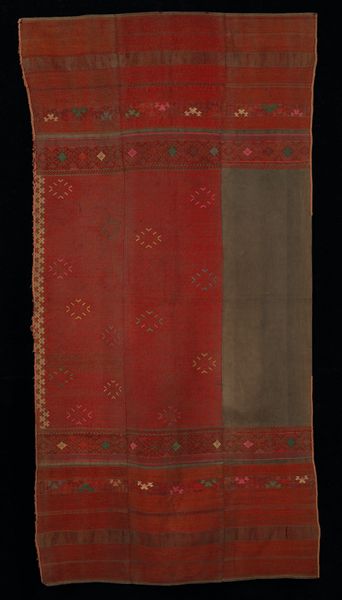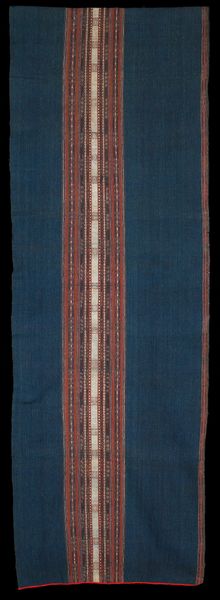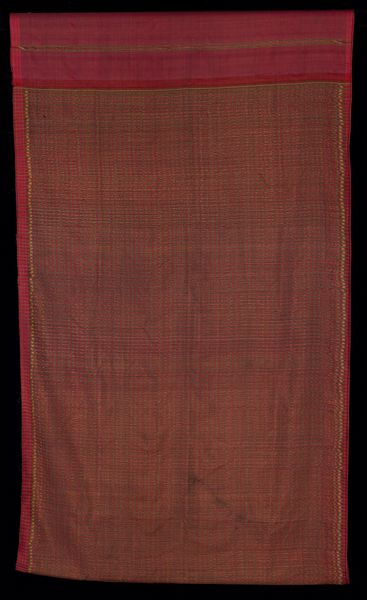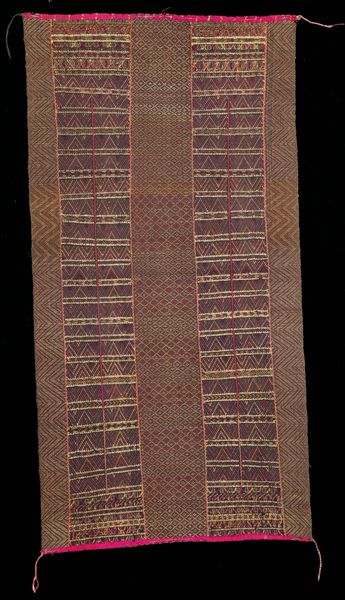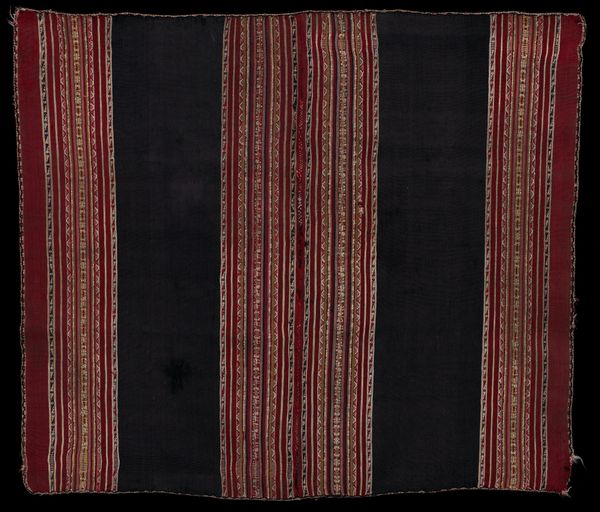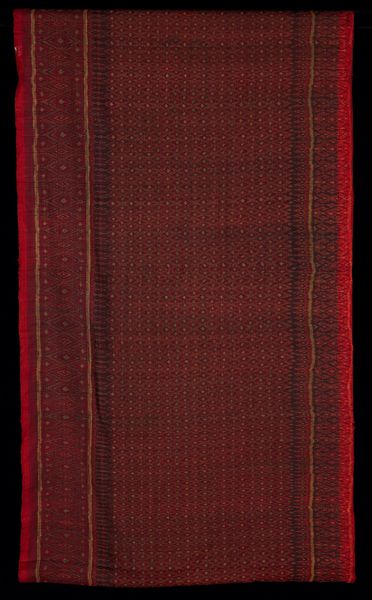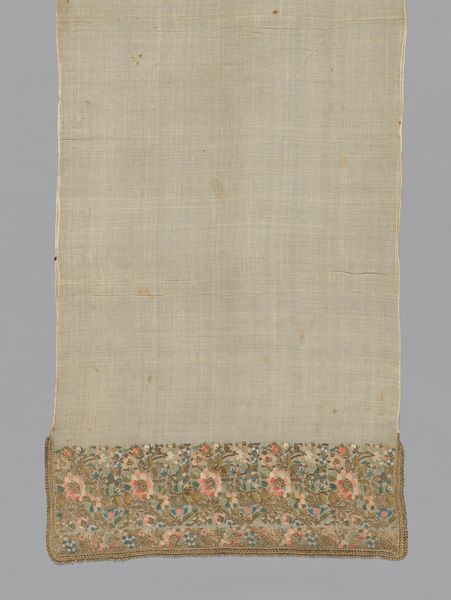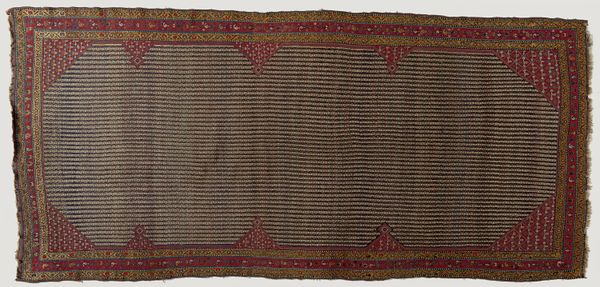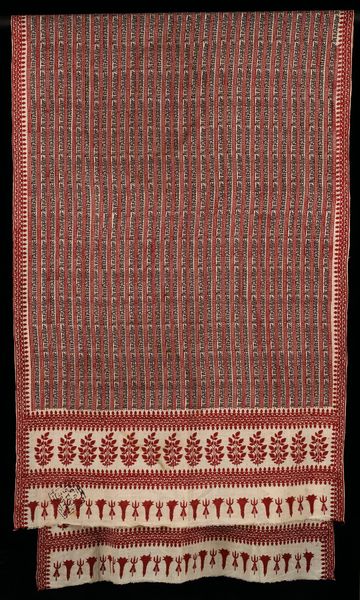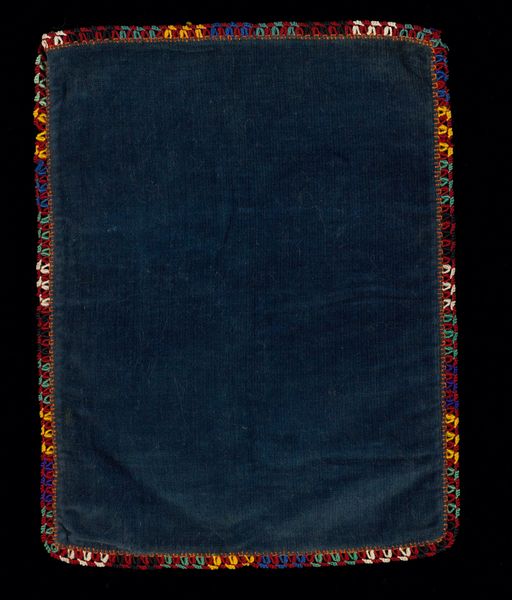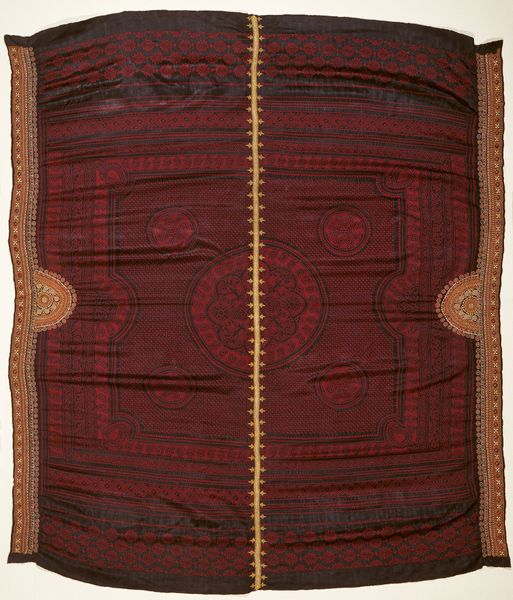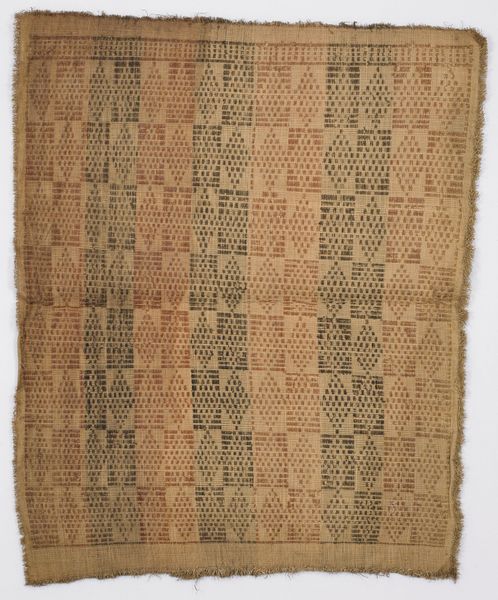
weaving, textile
#
pattern
#
asian-art
#
weaving
#
textile
#
geometric pattern
#
geometric
#
islamic-art
Dimensions: 166.4 × 71.8 cm (65 1/2 × 30 3/4 in.)
Copyright: Public Domain
Curator: Right now, we're standing in front of a stunning "Shoulder or Head Cloth (selendang)" from around the 19th century. It’s Minangkabau weaving, a textile piece currently residing here at The Art Institute of Chicago. What jumps out at you? Editor: Well, it’s definitely the formality, but it feels somber—the restrained palette with muted reds and grays projects such quiet sophistication, and yet I also think I sense real underlying strength. Curator: It's interesting that you picked up on the somber feel. Perhaps the limited color palette contributes to that mood. The weavers used complex geometric and abstract motifs. Look closely. Do you see the symbolic language embedded in those repeating forms? Editor: Absolutely. There’s a real compositional complexity here; the structure is built around layered borders featuring detailed geometric patterns, then that main central field is far more sparsely decorated. I find myself looking for a principle of cohesion to resolve all of it. Curator: Consider its function, though. These cloths were, and still are, part of significant ceremonies, dances, and gift exchanges within Minangkabau culture. This particular selendang, rich in design, likely held considerable status for its owner. What kind of narratives or rituals might it have been connected to, you wonder? Editor: Ritual, that’s a great prompt; the weight of tradition feels quite palpable. So, on that level, those restrained colors take on a completely different quality. It seems fitting now. And that weaving itself—the craftsmanship—all those meticulous details serving this deep history. Curator: Precisely! Weaving traditions in Minangkabau society weren't just about creating textiles. It’s often been seen as an expression of cultural identity, and those patterns carry profound significance from one generation to the next. Editor: So while on the surface this may look simply ornamental, there is a profound visual language at work. The abstract, the geometric—it’s far more potent than just decoration. Curator: That's exactly what I get from it as well—a quiet power. These cloths are testaments to cultural endurance, woven stories that continue to speak. Editor: Yes, exactly—that sense of encoded meaning is finally coming to the fore. This isn’t merely cloth; it's history materialized. I am so glad that the Art Institute have managed to bring this treasure from Asia.
Comments
No comments
Be the first to comment and join the conversation on the ultimate creative platform.
